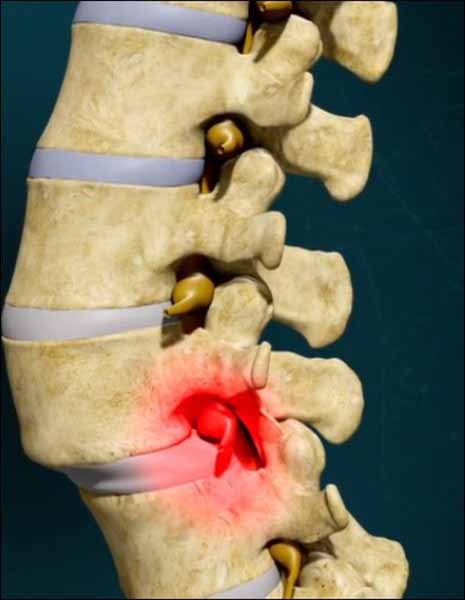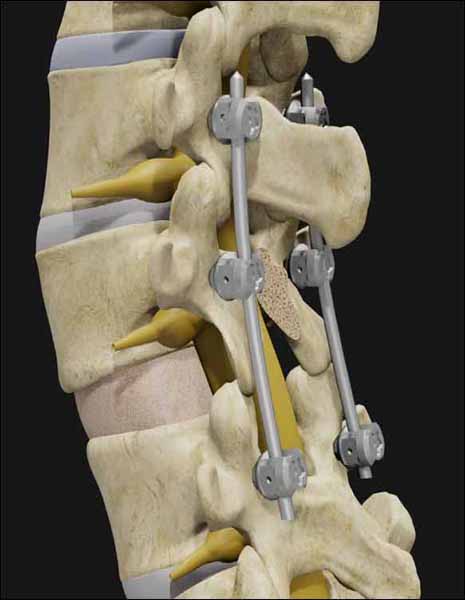
Spondylolisthesis refers to slippage of one vertebral body over the other in relation to the one beneath it making the spine unstable.
Risk factors:Patient often presents with low back ache, radiating pain to the legs, leg weakness.
Diagnosis is confirmed by clinical examination and the imaging withTreatment options include Bed rest, anti inflammatory drugs, Lumbar belt or surgery with spinal fusion & stabilization.


Spinal fusion also called arthrodesis is a surgical technique used to join two or more vertebrae (bones) within the spine.
The fusion is designed to eliminate motion in that fused segment of the spine, thereby decreasing or eliminating the back pain created by the motion. The spine is not actually fused at the time of the surgery. Instead, the surgery creates the conditions for the spine to be able to fuse and the fusion is a process that will set up over a 3 to 6 month (and up to 18 month) period of time following the spinal fusion surgery
Lumbar fusion surgery may be used to treat spondylolisthesis, degenerated discs, scoliosis or kyphosis (abnormal curvature of the spine), spinal infections or tumors, traumatic injury of the spine, recurrent disc herniation, and unstable spine
The surgery can be done as an open or minimally invasive spine (keyhole) surgery. In spinal fusion surgery a piece of bone, taken from other parts of the body or the excised spinous process is transplanted between the adjacent vertebrae. Screws, plates, or cages may be used with the bone graft to help hold the spine